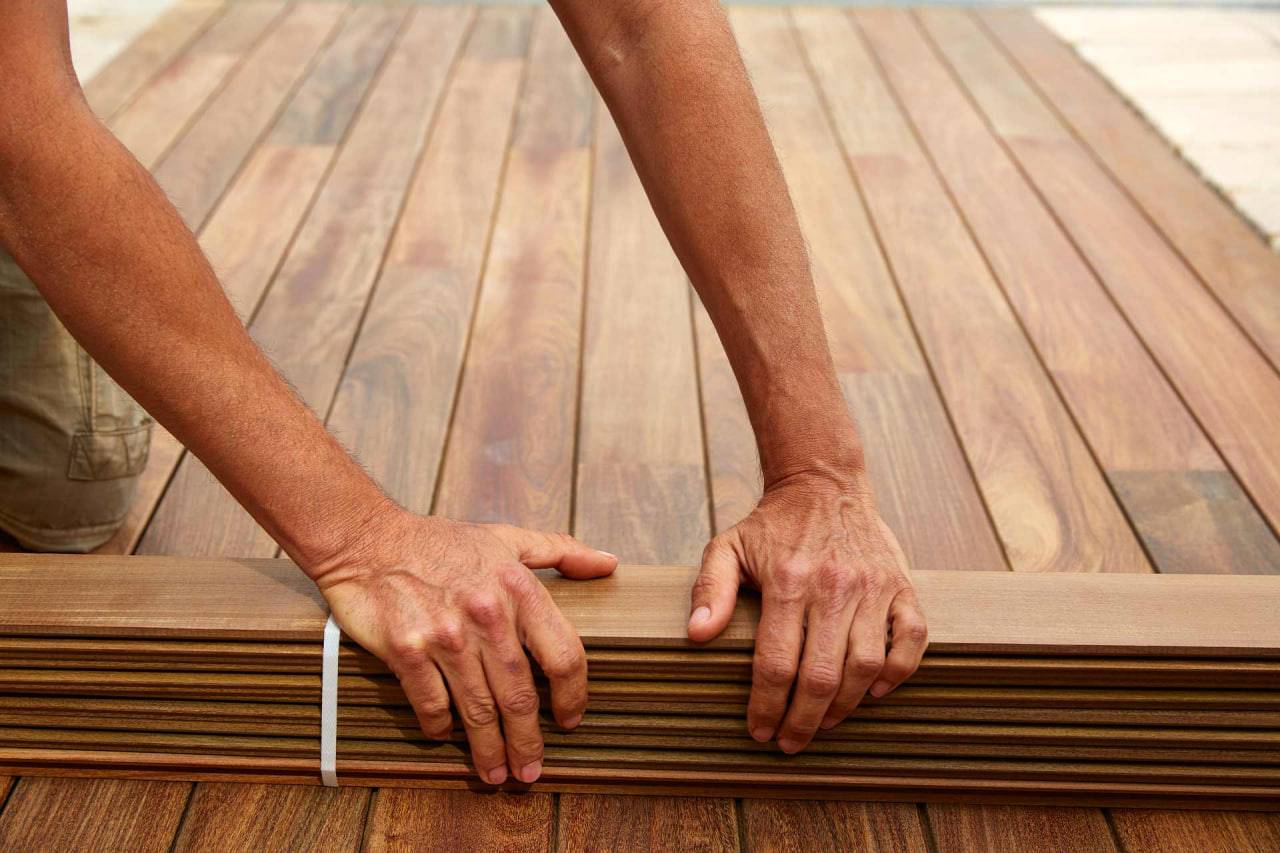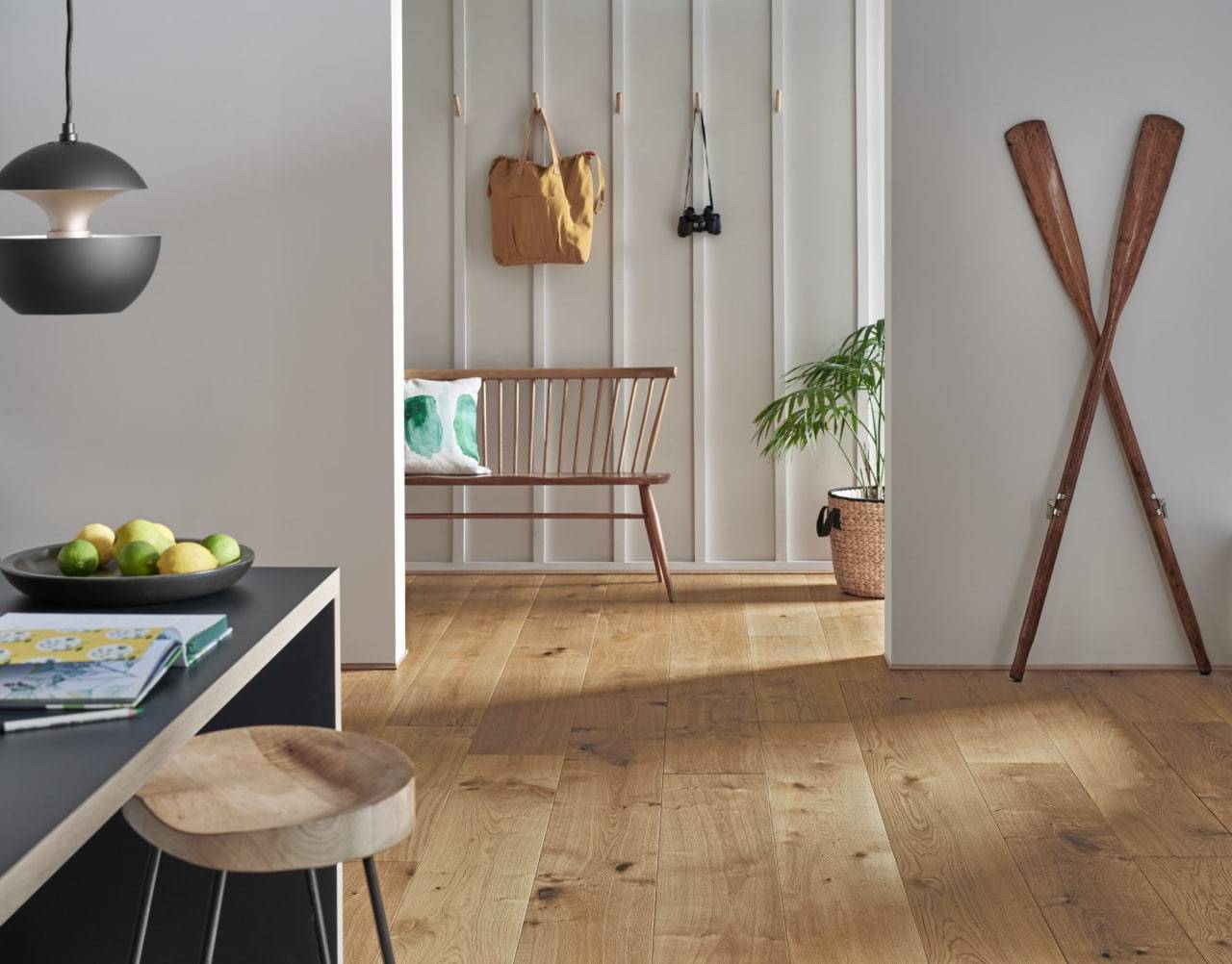Investing in hardwood floors is a decision that can significantly elevate the look and feel of your home. However, with a wide variety of options available, navigating the selection process can be overwhelming.
To ensure you make an informed and practical choice that aligns with your needs and budget, consider these three essential questions before falling for the undeniable charm of hardwood.
This approach transcends mere aesthetics, delving into the core factors that will influence your long-term satisfaction with your new flooring.
By carefully evaluating these considerations, you’ll be well on your way to stepping onto a hardwood masterpiece that complements your lifestyle and enhances your home for years to come.
How much flooring do you need?
Determining the amount of flooring you need is crucial for both budgeting and avoiding unnecessary purchases. Here’s how to get an accurate estimate:
-
Measure your space:
- Grab a tape measure and carefully measure the length and width of each room where you plan to install hardwood floors.
- Note down the measurements in either feet or meters, ensuring consistency throughout.
- If the room has any odd angles or cutouts, measure those sections separately and factor them into the total area.
-
Calculate the square footage:
- Multiply the length by the width of each room to get its individual square footage.
- Add the square footage of all the rooms together to determine the total flooring area required.
-
Add a buffer (10-15%):
- Account for waste during installation by adding a buffer of 10-15% to the total square footage. This covers mistakes, uneven cuts, and potential miscalculations.
Remember:
- Double-check your measurements for accuracy.
- Consider the layout of your room and any obstructions that might require additional material for cuts.
- Consult a flooring professional for guidance, especially for complex room shapes or installation methods.
Unveiling Your Vision: What Look Are You Going For?
Beyond functionality, hardwood floors are a powerful design element, shaping the ambiance and aesthetics of your space. Delving into your desired look is crucial for selecting the perfect match. Here are some key aspects to consider:
-
Color Palette:
- Light and airy: Opt for lighter woods like maple, white oak, or birch to create a sense of spaciousness and brightness. Ideal for smaller rooms or Scandinavian-inspired designs.
- Warm and traditional: Richer tones like walnut, mahogany, or cherry exude warmth and elegance, complementing classic or rustic styles.
- Modern and bold: Embrace darker stains or exotic woods like Brazilian walnut or teak for a dramatic and contemporary statement.
-
Grain Pattern:
- Uniform and subtle: Smooth grains in woods like maple or beech offer a clean and minimalist aesthetic.
- Bold and rustic: Opt for woods with prominent figuring like hickory or oak for a more textured and natural look.
-
Plank Width:
- Wide planks (over 5 inches): Create a sense of openness and grandeur, well-suited for large rooms.
- Narrow planks (less than 3 inches): Add detail and visual interest, ideal for smaller spaces or traditional settings.
-
Sheen Level:
- Glossy: Enhances light reflection and adds formality, but shows scratches more easily.
- Satin: Offers a balance between shine and subtlety, suitable for most spaces.
- Matte: Provides a natural, understated look, ideal for casual or rustic environments.
Ah, the million-dollar question (well, hopefully not literally a million!): finding the best deal on affordable hardwood floors. While the answer can vary depending on your specific location and budget, here are some general tips and resources to get you started:
Consider alternatives to solid hardwood:
- Engineered hardwood: This option offers the look and feel of solid hardwood at a lower price point. It’s made with a core of plywood or MDF topped with a thin layer of real wood. Engineered hardwood is generally more stable than solid hardwood and can be installed in areas with moisture concerns, like basements.
- Luxury vinyl plank (LVP): This is a type of vinyl flooring that is made to look like real wood. It’s often more affordable than engineered hardwood and is very durable and water-resistant.
- Laminate flooring: This is another type of flooring that is made to look like real wood. It’s the most affordable of the three options, but it is not as durable as engineered hardwood or LVP.
Shop around and compare prices:
- Get quotes from multiple flooring retailers, both online and in-person. Don’t be afraid to negotiate!
- Look for sales and promotions. Many retailers offer discounts on flooring throughout the year.
- Consider buying remnant flooring. This is flooring that is leftover from other projects and can be significantly discounted. However, keep in mind that remnant flooring may be in limited quantities and sizes.
Look for hidden costs:
- Don’t forget to factor in the cost of installation, underlayment, and other materials.
- Some retailers may charge delivery fees.
- If you’re hiring a professional installer, be sure to get quotes from multiple companies and compare prices.
Dex Flooing: Always The Best
Dex Flooring is the leading flooring business in Melbourne covering all types of flooring products such as laminate, bamboo, engineered timber, hybrid and carpet.
Call us: 0483 224 831
Conclusion: Stepping into the Perfect Choice
By diligently considering these three key questions, you’ve embarked on a journey towards selecting hardwood floors that not only fit your budget and lifestyle but also resonate with your design aspirations.
From accurately measuring your space to visualizing your desired aesthetic and exploring cost-effective alternatives, you’ve equipped yourself with valuable knowledge to navigate the exciting world of hardwood flooring.
Remember, your hardwood floors will become a cherished element of your home, a foundation for countless memories and experiences.
Take your time, research thoroughly, and don’t hesitate to seek professional advice if needed. Embrace the process, and ultimately, step confidently into the perfect choice that brings your vision to life, plank by beautiful plank.
FAQs: Hardwood Flooring for Your Dream Home
Is hardwood flooring right for my lifestyle?
Hardwood floors are stunning, but require regular cleaning and maintenance. Consider your activity level, pets, and budget before committing. Engineered hardwood may be a good compromise for active households.
What’s the difference between solid and engineered hardwood?
Solid hardwood is a single piece of wood, offering timeless beauty and durability. Engineered hardwood has a plywood core topped with real wood, making it more stable and moisture-resistant, often at a lower cost.
What wood species should I choose?
Popular choices include oak (durable), maple (light and airy), walnut (warm and classic), and cherry (rich and elegant). Consider factors like color, grain pattern, and hardness based on your needs and preferences.
What’s the best finish for my floor?
Glossy finishes reflect light and add formality, while matte offers a subtle, natural look. Satin provides a balance between the two. Consider the desired ambiance and potential wear and tear in your space.
How can I find affordable hardwood flooring?
Explore alternatives like engineered hardwood or LVP. Compare prices from multiple retailers, look for sales and discounts, consider remnant flooring, and factor in installation costs.
Do I need to hire a professional installer?
While DIY is possible, professional installation ensures proper subfloor preparation, leveling, and finishing, potentially saving time, money, and headaches in the long run.
How do I care for my hardwood floors?
Regular sweeping, vacuuming, and occasional refinishing are crucial. Use recommended cleaning products, avoid excessive moisture, and address spills promptly.
What are some eco-friendly hardwood options?
Look for sustainably sourced wood with certifications like FSC (Forest Stewardship Council). Consider reclaimed wood for a unique and environmentally conscious choice.
Can I install hardwood floors over radiant heat?
Engineered hardwood is generally compatible with radiant heat, while solid hardwood requires specific considerations. Consult a professional for guidance.
What are some current hardwood flooring trends?
Wider planks, natural finishes, herringbone patterns, and smoked or gray tones are popular choices. Ultimately, select a style that resonates with your personal taste and complements your home’s design.



